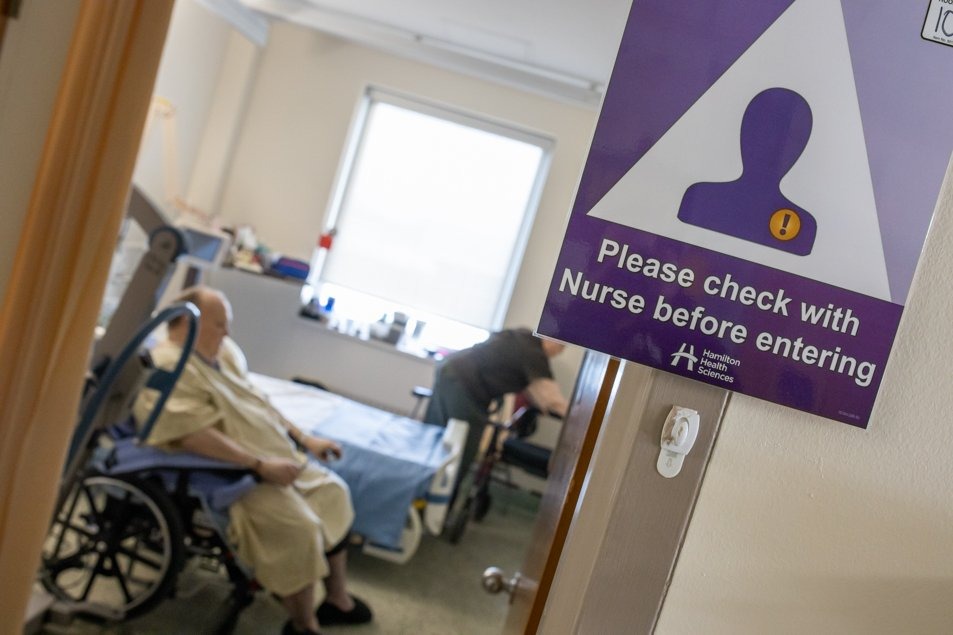
New program keeps staff safe and patients comfortable
Violence in the workplace is one of the top health and safety concerns facing Ontario’s healthcare sector today. At Hamilton Health Sciences, nine percent of injuries that are significant enough to require medical attention or time away from work relate to violent patient behaviours such as hitting, punching and verbal abuse.
“We have a moral obligation to our staff, physicians and volunteers to provide a safe work environment while, at the same time, providing the highest quality of care to our patients,” says Susan Fuciarelli, director of Health, Safety and Wellness. “In the past, we have used different strategies to communicate potential patient safety risks. Now we have a standard, more objective way to document and communicate it.”
Standard tools to address violent patient behaviours
HHS is implementing a program at all hospital sites this year to support staff and meet our requirement under the Occupational Health and Safety Act. The program is Behaviour Safety Risk Communication and Care Planning (BSR).
“Materials are encouraging open conversations about staying safe.”
The purpose of the program is to communicate standard approaches to planning care for the safety and comfort of staff, doctors and patients when a behaviour safety risk is identified. This helps reduce the risk of harm for everyone. It focuses on two important questions: “What do I need to know to keep the patient calm?” and “What do I need to know to keep myself and my colleagues safe?” It also standardizes screening tools and language across sites and uses visuals such as purple door signs, charting stickers, whiteboard magnets and patient wristbands to communicate risk.
Building on evidence
The program is based on evidence from literature, best practices from other hospitals and input from patients and families. A wide range of groups and specialties from across HHS contributed to the work.
“We built the program using evidence, and now we are also building our own evidence as we learn from one phase of the project to support the next,” says Elaine Principi, co-lead for the project.
Benefits for communication and care planning
The program was successfully implemented at Juravinski Hospital and Cancer Centre (JHCC) in 2018. Surveys with staff and doctors showed that since the program launched, their ability to identify patients who present a behaviour safety risk and plan for their care had improved. Over half of respondents said they felt less at risk from patients who displayed violent, aggressive or responsive behaviour and better supported by the hospital. They also described improved communication among their peers.
Jennifer Pringle, a registered nurse at JHCC agrees and says, the visuals help keep everyone’s safety top of mind. “BSR signs and other materials are encouraging staff, volunteers and families to have open conversations about staying safe.”
While the visuals have been a helpful tool, the BSR leadership team recognizes the potential stigma related to identifying patients with violent behaviours, particularly using a wristband. They continue to work with patients, families and staff around these concerns.
Working together to address stigma
“Keeping staff safe and minimizing patient stigma can be seen as competing priorities, but this program helps us address both,” says Elaine. “The care plan helps staff and physicians work together to keep the patient calm and comfortable. The stigma is really about our own judgement. Preventing stigma starts with our increased understanding of our patient and their needs.”
The program is currently being phased in at all HHS sites through training and consultation. The team is working with each unit to customize it to meet the needs of their patients and staff.
This story was selected as a winner in our Strategy in Action contest, which asks teams across Hamilton Health Sciences to share how they are putting our strategy into practice.
This initiative supports Enterprise Approach, one of four strategic directions identified in Hamilton Health Sciences’ Strategic Plan. Enterprise Approach is about leveraging our collective strengths to think and act as one hospital.
